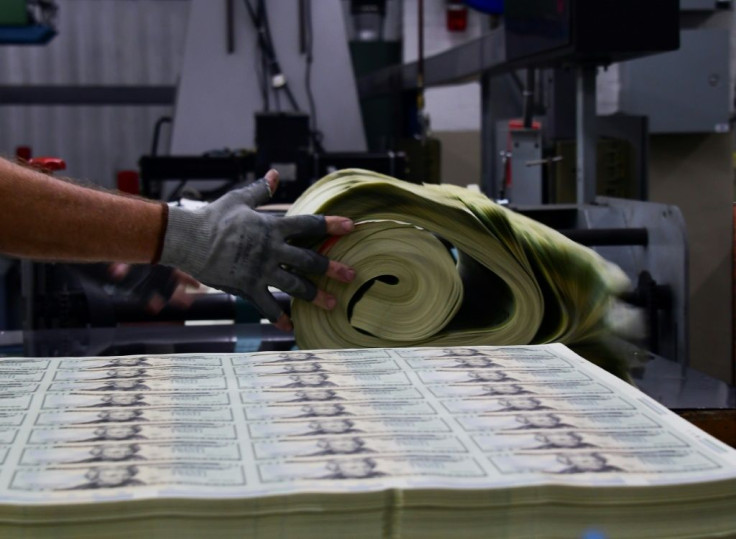How Much Does US Government Owe? Congressional Budget Office Projects Ballooning Deficit, Debt

KEY POINTS
- The 2020 U.S. budget deficit is expected to hit $1 trillion and to average $1.3 trillion annually over the next decade
- The deficit and the debt as a percentage of growth is higher than it's been since World War II
- Consumers will hold the economy up in 2020 but that strength will wane in coming years
The nonpartisan Congressional Budget Office on Tuesday projected budget deficits exceeding $1 trillion through 2030, with the national debt growing to 98% of gross domestic product by the end of the time period.
CBO Director Phill Swagel warned the growth of the debt burden is unsustainable.
The CBO said the 2020 deficit likely will hit $1 trillion -- $8 billion more than what was projected last August -- and then average $1.3 trillion over the next decade. The projected deficits rise from 4.6% of GDP to 5.4% by 2030.
“Not since World War II has the country seen deficits during times of low unemployment that are as large as those that we project—nor, in the past century, has it experienced large deficits for as long as we project,” Swagel said in a blog post.
The national debt is expected to grow to 81% of GDP for 2020, increasing to 98% by 2030, the highest percentage since 1946. If the trajectory is not altered, that percentage grows to 180% by 2050, an increase of 30 percentage points over what was projected in June and far higher than it’s ever been.
The national debt stood at $23.2 trillion Tuesday.
GDP is expected to grow by 2.2% in 2020, mainly as a result of consumer spending and business fixed investment, with inflation – pegged at 2.3% in December -- likely to rise along with interest rates. Unemployment is expected to remain low. It was at 3.5% in December.
After 2020, growth is expected to slow over the decade, averaging just 1.7% annually, largely due to a constricted labor force. Interest on Treasury notes is expected to reach 3.1% by 2030 (compared to 1.6% to 2% on Tuesday).
“We project that real GDP will expand at a solid rate of 2.2 percent this year, driving continued job creation and a historically low unemployment rate,” Swagel said. “We anticipate that consumer spending, spurred by rising wages and household wealth, will remain strong; we also expect business investment to rebound as several of the factors that weighed on it last year abate. In particular, we expect higher oil prices to boost investment in the energy sector and the impact of trade barriers on economic growth to diminish.”
But, he said, spending is likely to grow more than revenue in the coming decade, partly because of growing outlays for an aging population.
“That debt path would dampen economic output over time. Rising interest costs associated with the debt would increase interest payments to foreign debt holders and thus reduce the income of U.S. households by increasing amounts,” he said. “Such a significant increase in federal borrowing would also elevate the risk of a fiscal crisis. In addition, it could limit lawmakers’ ability to adopt deficit-financed fiscal policies to respond to unforeseen events or for other purposes.
“Negative economic and financial effects that were less abrupt but still significant -- such as expectations of higher inflation or an increased burden of financing public and private activity -- would also have a greater chance of occurring. Those effects would worsen the consequences associated with high and rising federal debt.”
© Copyright IBTimes 2024. All rights reserved.





















